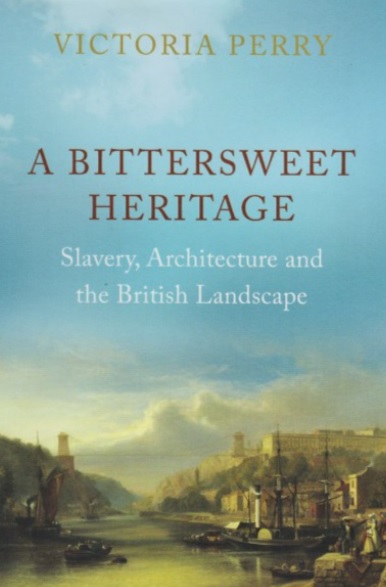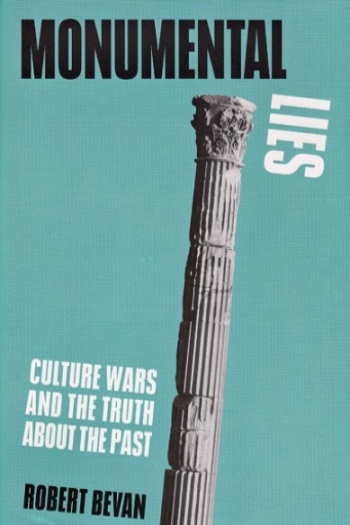A Bittersweet Heritage: slavery, architecture and the British landscape

|

|
| A Bittersweet Heritage: slavery, architecture and the British landscape, Victoria Perry, Hurst and Company, 2022, 311 pages, 63 colour illustrations | Monumental Lies: culture wars and the truth about the past, Robert Bevan, Verso, 2022, 376 pages, black-and-white illustrations. |
Victoria Perry, a historian, an architect and practice director at Donald Insall Associates, wrote an award-winning PhD thesis on Slavery, Sugar and the Sublime. A busy life seemed to mean that her hopes of turning it into a book would have to be a retirement project. The situation changed with the killing of George Floyd and the growth of Black Lives Matter: ‘Black history’, formerly a specialist subject, became part of mainstream British history and public discourse, and Perry found that her concept had become publishable.
Her subject is the relationship between the wealth of slave-owning elites and the architecture and landscapes of Georgian Britain. Trade in slaves and profits from Caribbean sugar plantations paid for stately homes and landscape gardens, and supported the prosperity of ports such as Bristol, Liverpool and Glasgow, and fashionable centres like Bath. The wealth led to poor, isolated areas of Wales, Cumbria and Scotland becoming tourist destinations that we now know as Snowdonia, the Lakes and the Highlands, with what was thought of as the ‘natural scenery’ of mountains, rivers and rocks being viewed as landscape art, appreciated for its sublime and picturesque qualities.
The appreciation of those two distinct qualities, the ‘sublime’, on the one hand, and the ‘beautiful’ or ‘picturesque’, on the other, was provoked by Edmund Burke’s A Philosophical Enquiry of 1757. The sublime, characterised by vastness, dramatic height or danger, could be of equal or greater aesthetic value as buildings and landscapes created by human hand, Burke wrote. Understanding such ideas today helps us, in turn, appreciate the works that they helped to shape.
Perry highlights, in particular, the stories of Piercefield Park, Monmouthshire; Danson Park, Bexleyheath; Harewood House, near Leeds; and Penrhyn Castle, North Wales. Her investigations have widened to how sublime and picturesque qualities were perceived in newly created landscapes in Britain, the Caribbean and the mainland American colonies; how they were represented in paintings, prints and the written word; and how they were experienced by those places’ first tourists. Her message is that over a period of more than 300 years of colonisation and empire, much of British history happened overseas. Understanding fully the landscapes and much of the 18th, 19th and early-20th-century built heritage of the British Isles depends on studying more than just these islands’ history.
Victoria Perry has a positive and timely conclusion to her fine, well-illustrated work of (often painful) history. ‘As the vigorous public debate following the Colston statue’s theatrical ducking demonstrates, historic landscapes, structures and buildings, as well as sculptures, memorials and paintings, can provide a means of engaging with complex, global histories and identities that is immediate and accessible’. A Bittersweet Heritage is convincing evidence of that.
Like Perry, Robert Bevan is concerned with how monuments and buildings shape our understanding of the world around us. His important book, Monumental Lies, explains how we can be manipulated, and discusses many of the political issues that are central to the practice of historic building conservation.
When ruined historic buildings or parts of cities are being reconstructed, for example, ‘the intent… may range from straightforward aesthetic and academic reinstatement, the lure of the tourist dollar, or outright manipulation for political ends,’ Bevan writes. He puts the case persuasively that we need to be able to tell the difference, and his examples may help us to do that.
The Garrison Church in Potsdam, Germany, ‘its baroque tower covered in carvings or guns and swords, was a primary site for the celebration of Prussian militarism’, and later the Nazis celebrated it as the venue of an important meeting between Hitler and President von Hindenburg that was a milestone in Hitler’s rise to power. Badly damaged by bombing in the second world war, the church was later demolished and is now being rebuilt.
To Bevan, that heritage is not worthy of celebration. The rebuilding gives out the wrong messages, he argues, as does the rebuilding of Dresden’s Frauenkirche from a pile of wartime rubble. Although many see the Frauenkirche’s reconstruction as a symbol of reconciliation, others, on the political far right, remember the building as a notable symbol of the National Socialist German Christian church, as it was under Hitler. In recent years the rebuilt church has sometimes been the focus of neo-Nazi marches.
In Bosnia and Herzegovina, among other places, Unesco has tied itself in knots over the politics of restoration, in Bevan’s view. For example, ‘while it may be justified to rebuild old Mostar and its symbolic bridge in the face of ethnic cleansers and genocidaires intent on eradicating Ottoman culture, when Unesco then declares the results to be an authentic world heritage site, it is undermining truth and the facts of history.’
Bevan describes how the 19th-century remodelling of St Albans Cathedral by Sir George Gilbert Scott involved recreating a shrine to St Amphibalus from stone fragments gathered from around the building. Where parts of the shrine were missing, Gilbert Scott filled the gaps with brick – an inelegant solution, but truthful in a way of which William Morris would have approved. Recently (in 2021) the shrine has been reconstructed once more. This time, Bevan writes, ‘skilful stone masons have created an approximation of the medieval shrine, substituting new stone carvings for Scott’s bricks and smoothing over the gaps between old and new stone. It now takes a practiced eye to tell the difference.’
The effect, he suggests, is to erase the aesthetic and religious history that had been told by Gilbert Scott’s version of the shrine. He notes that nearby information panels tell visitors (falsely, he claims) that the shrine was ‘not a museum piece or a historical item’. Whatever the shrine was not, it seems (although Bevan does not note this) that the church has revived it for sacred purposes, as is evidenced by a video on YouTube showing the shrine having incense wafted over it on completion of the recent restoration. Was the church justified in undoing Gilbert Scott’s work? Such questions are what Bevan’s book helps us to think about.
An example of an approach to restoration of which Bevan does approve is the ‘hugely successful collaged reworking’ by David Chipperfield and Julian Harrap of the once-ruined Neues Museum in Berlin, ‘restoring post-war ruins in ways that incorporate the scars of past conflict in line with the Venice Charter and the SPAB manifesto’.
As for problematic statues, such as those of Edward Colston and Cecil Rhodes, Bevan’s advice is: ‘do not entirely obliterate the original, but instead allow it to be simultaneously understood and undermined’. In the case of the statue of Rhodes at Oriel College, Oxford, he suggests turning it to face its niche, ‘shamed in the full view of the city’s High Street shoppers’, as one option. But generally he regards statues, whether of worthy or now-reviled subjects, as more trouble than they are worth.
Monumental Lies is at heart a polemic about the need to ensure that the lessons we learn from historic monuments – statues, buildings and places – reinforce humane values. Bevan sums up that message most cogently in quoting the historian Yosef Yerushalmi. ‘The ‘antonym of “forgetting” is not “remembering”, Yerushalmi wrote, ‘but “justice”.’
This article originally appeared as ‘History and justice’ in the Institute of Historic Building Conservation’s (IHBC’s) Context 175, published in March 2023. It was written by Rob Cowan is editor of Context.
--Institute of Historic Building Conservation
Related articles on Designing Buildings
IHBC NewsBlog
Old Sarum fire in listed (& disputed) WW1 Hangar - Wiltshire Council has sought legal advice after fire engulfed a listed First World War hangar that was embroiled in a lengthy planning dispute.
UK Antarctic Heritage Trust launches ‘Virtual Visit’ website area
The Trust calls on people to 'Immerse yourself in our heritage – Making Antarctica Accessible'
Southend Council pledge to force Kursaal owners to maintain building
The Council has pledged to use ‘every tool in the toolbox’ if urgent repairs are not carried out.
HE’s Research Magazine publishes a major study of the heritage of England’s suburbs
The article traces the long evolution of an internal programme to research 200 years of suburban growth
IHBC Context 183 Wellbeing and Heritage published
The issue explores issues at the intersection of heritage and wellbeing.
SAVE celebrates 50 years of campaigning 1975-2025
SAVE Britain’s Heritage has announced events across the country to celebrate bringing new life to remarkable buildings.
IHBC Annual School 2025 - Shrewsbury 12-14 June
Themed Heritage in Context – Value: Plan: Change, join in-person or online.
200th Anniversary Celebration of the Modern Railway Planned
The Stockton & Darlington Railway opened on September 27, 1825.
Competence Framework Launched for Sustainability in the Built Environment
The Construction Industry Council (CIC) and the Edge have jointly published the framework.
Historic England Launches Wellbeing Strategy for Heritage
Whether through visiting, volunteering, learning or creative practice, engaging with heritage can strengthen confidence, resilience, hope and social connections.















Comments
[edit] To make a comment about this article, click 'Add a comment' above. Separate your comments from any existing comments by inserting a horizontal line.
So, Victoria (note the irony in her name) here, comes across as the voice of authority for themes of Britain's transatlantic slavery and dealing with historic monuments. Donald Insall don't even so much as employ a single 'token' black person, despite having bases in London, Manchester, Birmingham.
I haven't yet read the book, but based on the narrative here, it seems like somewhat of a downplay of the harkening realities of the transatlantic slave trade - disgraceful that the complete lack of diversity in the relatively workforce.